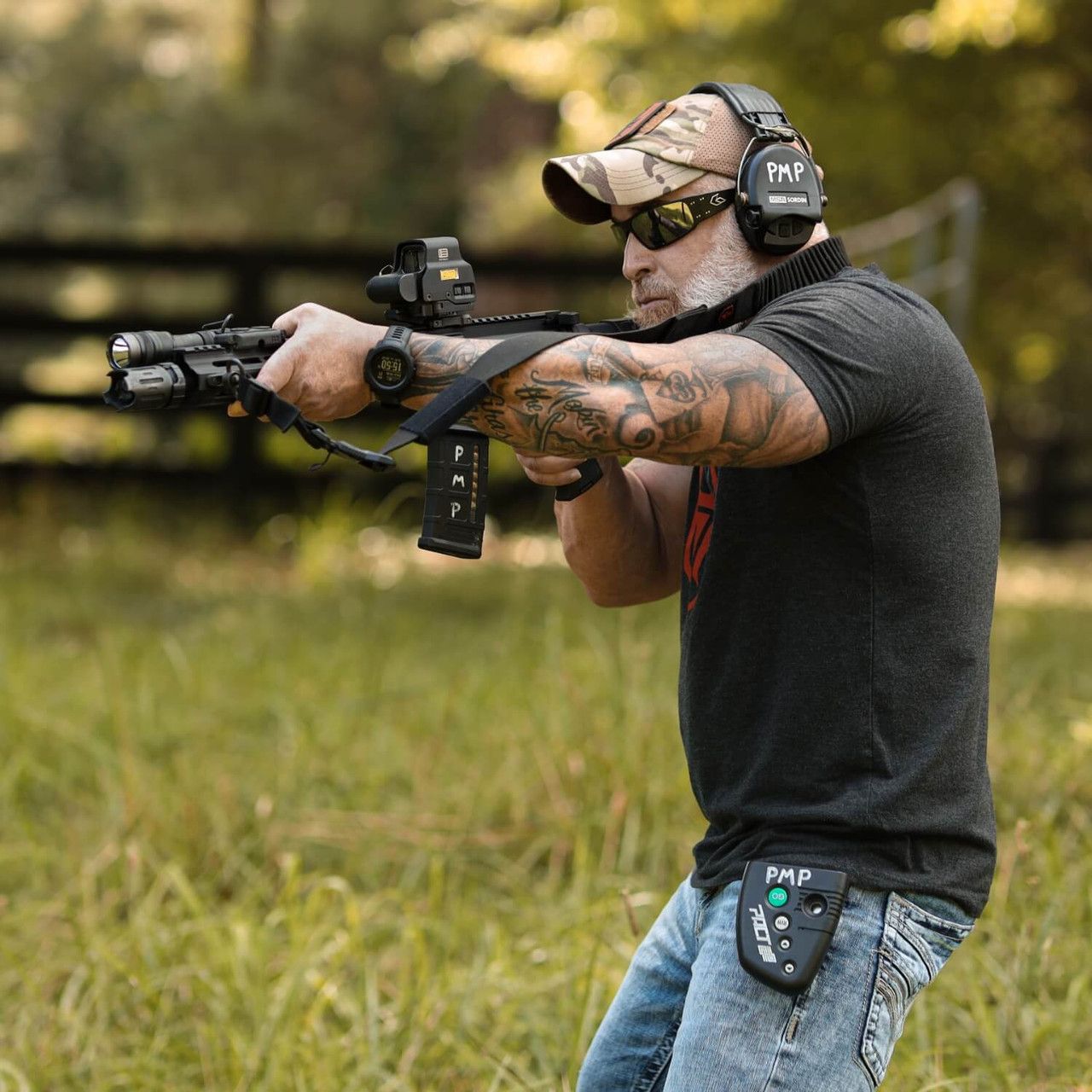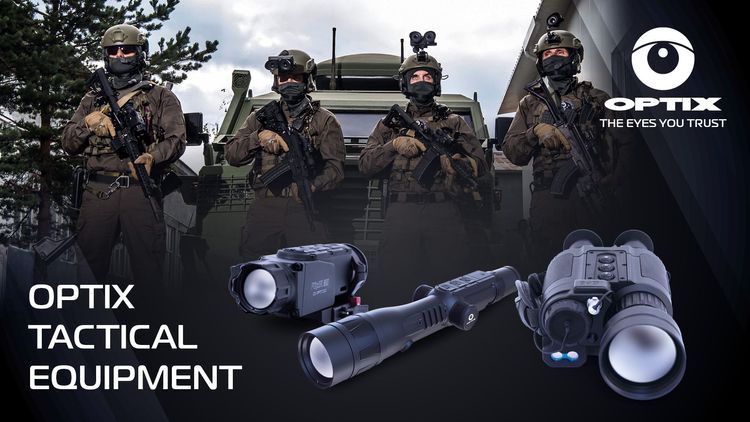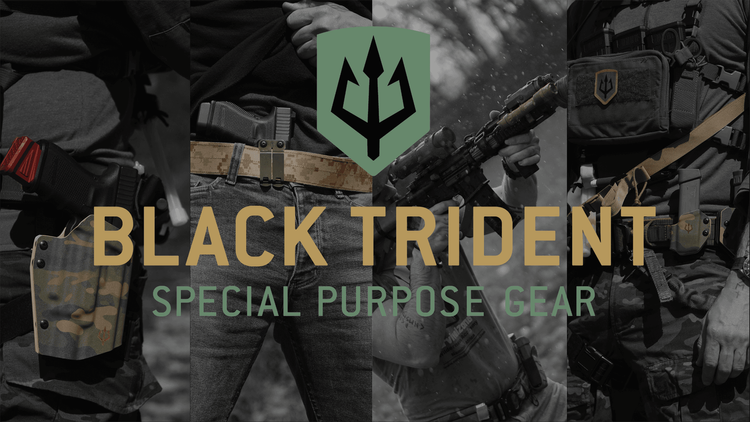"We didn't need that in the past either!"
Everyone who arrives at the local range with a shot timer for the first time hears this at least once. It was the same for me.
And yet this statement is not entirely correct. As early as 1924, the American Ed McGivern was working on precisely this problem. He was an exceptional gunner - but how fast was he really? And why do we measure times at all? Why should I measure times? These are the questions we are exploring today. And, above all, we will clarify why certain timers are preferred.
A digression: WHAT are shot timers?
Wikipedia defines it like this: "A shot timer is a shot activated timer used in shooting sports, which starts the competitor by an audible signal and also records the competitor's time electronically by detecting the sound of each shot, together with the time from the start signal."

Picture above: We have come a really long way. The picture shows the “PACT MK IV XP”, one of PACT's first timers from the last millennium. Source: www.pact.com
In other words, the time between “BEEP” and “PENG” and each further “PENG” is measured. This allows precise conclusions to be drawn about a shooter's capabilities. We have already written about HOW to measure these skills here. Specifically, shot timers display the required TIME PERIODS, typically measured in tenths of a second. But why?
Until that time, only a referee could manually measure how fast a shooter was using a stopwatch. But it should be obvious that this method did not offer any real precision. It was more the skills of the measurer rather than the shooters skills. To this day, I still think that my sports teacher simply pressed the stopwatch too late for the 1000-meter run. Seriously.
The first trials.
In contrast to the handy devices of our time, early models were often clunky and more reminiscent of the laboratories of bygone eras, reminiscent of the work of Dr. Frankenstein at the beginning of the 20th century.
At the time, Ed McGivern's first approach was to connect his revolver to a kind of chronograph using cables. At that time, it was by no means predictable that it would be used as a training optimization device in the future. At first, it was more of a piece of evidence. McGivern even obtained certification for the timer, which was based entirely on his own idea, from the U.S. Bureau of Standards. This once again illustrates McGivern's genius. As a complete self-taught shooter, he had not only developed into one of the best shooters of all time, but had also designed, built and certified the first timer.

Picture above: Ed McGivern (right) and his self-designed, built and officially certified timepiece from 1924 (left). It was accurate to within a twentieth of a second. This was confirmed and recognized by the U.S. Bureau of Standards. Image: www.americanrifleman.org / www.montanacowboyfame.org
Not surprisingly, the machine did not succeed. Because of the bulky equipment and the necessary cables, shooters stuck with the stopwatch. They accepted human error in stopping and rather relied on a second person. Today we know: At a certain speed, the measured times no longer depended on the shooter's ability, but on the timekeeper's - an immense disadvantage. The change did not happen until the 1980s, when the holster maker Bill Rodgers developed a timer that we would now call a pure "par timer". Essentially, this is a timer that gives a start and stop signal, allowing times to be measured, at least indirectly. This development was a significant step because it made it possible to measure a shooter's reaction time without having to rely on a second human and his reaction
But the par timer also had another crucial advantage: it put the shooter under direct stress through a fixed time window. This additional pressure simulated real, time-critical situations, which made the training much more demanding. The shooter now not only had to react quickly, but also act within a certain time frame, which demanded speed and precision and possibly pushed them to their limits. This technique helped to increase the quality of training and raise the level of many shooters to a new level. After the first "beep" everything changes, after the second "beep" nothing matters anymore.
Shortly thereafter, the first microphone-based timer was introduced.
Mission success requires tactical equipment you can trust in any environment. OPTIX Tactical Equipment ensures reliability and performance in every operation.
From then to now: change and effect
In 1982, Ronin Colman developed the PACT Championship Timer, followed by the current CLUB III.
The MKIV Championship is still on the market today. However, it should be mentioned that the MK IV has a built-in ballistic computer and can be connected to chronographs also available from PACT. This and the size of the timer quickly demonstrate that this is more of a tool for less dynamic situations and for tracking loads in the reloading sector. However, the CLUB III is the better choice for more dynamic applications and exercises in dry firing or on the shooting range. More compact, easier to handle and specially optimized for “range work”, it offers the flexibility that the MKIV cannot provide in its specialized field. Both devices have their own strengths, but the real difference lies in the way they are used - the MKIV is the king of precision, while the CLUB III represents the dynamics of the field.

Picture above: No matter where we look - this little black thing with the green button is everywhere. But why? Why this one of all things? Source: warriorpoetsupplyco.com
"Why him? Why HIM tho?!"
Because he does right what many other timers do wrong: Complexity - or rather: the absence of it. You have four buttons, one bigger than the other. Nothing more. That's it. The timer is so simple that even a trained gorilla could operate it. While other timers advertise themselves as being particularly small, light or packed with functions, the question is: do we really need that? In 95% of my training sessions, a “beep”, a start time and an end time are enough for me. At best, the splits or when the first shot broke. Sometimes that's more analysis than enough.
Other brands advertise with a smartphone connection and direct data transfer. But let's be honest: after 12 seconds and the next “beep”, nobody is interested in the split time from three drills ago. Who needs all these gimmicks when you just want to work quickly and precisely? Because the fact is: the more complex a tool is, the less it is used. And that also applies to timers. Simplicity wins. The mini buttons of the competition are only a charming feature until you're shooting with gloves on. Or it's freezing cold on the indoor shooting range. Or - even better - when the two come together and you're desperately trying to press some tiny button while your fingers are frozen.
And then there is probably the most important reason: ergonomics. With the display size of the PACT CLUB 3, times are easy to read even when the timer is hanging comfortably on your belt. This is a massive advantage over everything else on the market. Simply plug it in, simply read it off, simply operate it. It can be that simple - and that's how it's used.
Not only did PACT play a key role in the development of the scene, they continue to affect it today. And to a certain extent indirectly, because CLUB 3 is not officially provided anywhere like a certain SMU or SOF. Nevertheless, he defines standards. And as we learned in the beginning: Measurements and standards define where we really stand. And if you see someone on the range with a little black and green thing like this, you can be almost sure: he (or she) is one of us. "A good guy." Isn't that fantastic?
Mission success requires tactical equipment you can trust in any environment. OPTIX Tactical Equipment ensures reliability and performance in every operation.
Black Trident: Special Purpse Gear & Training. Your Gear is our responsibility. Now, your training is too.





